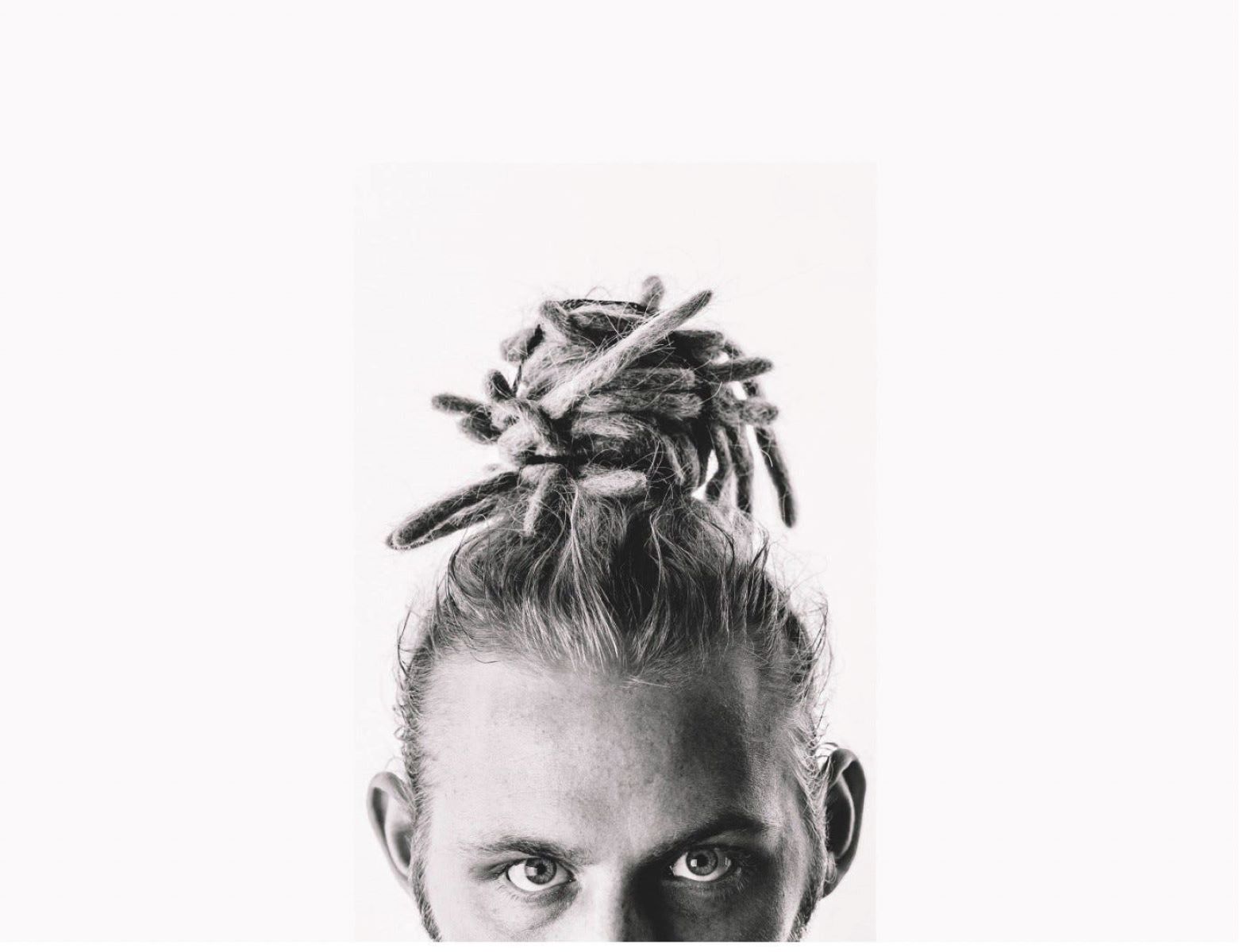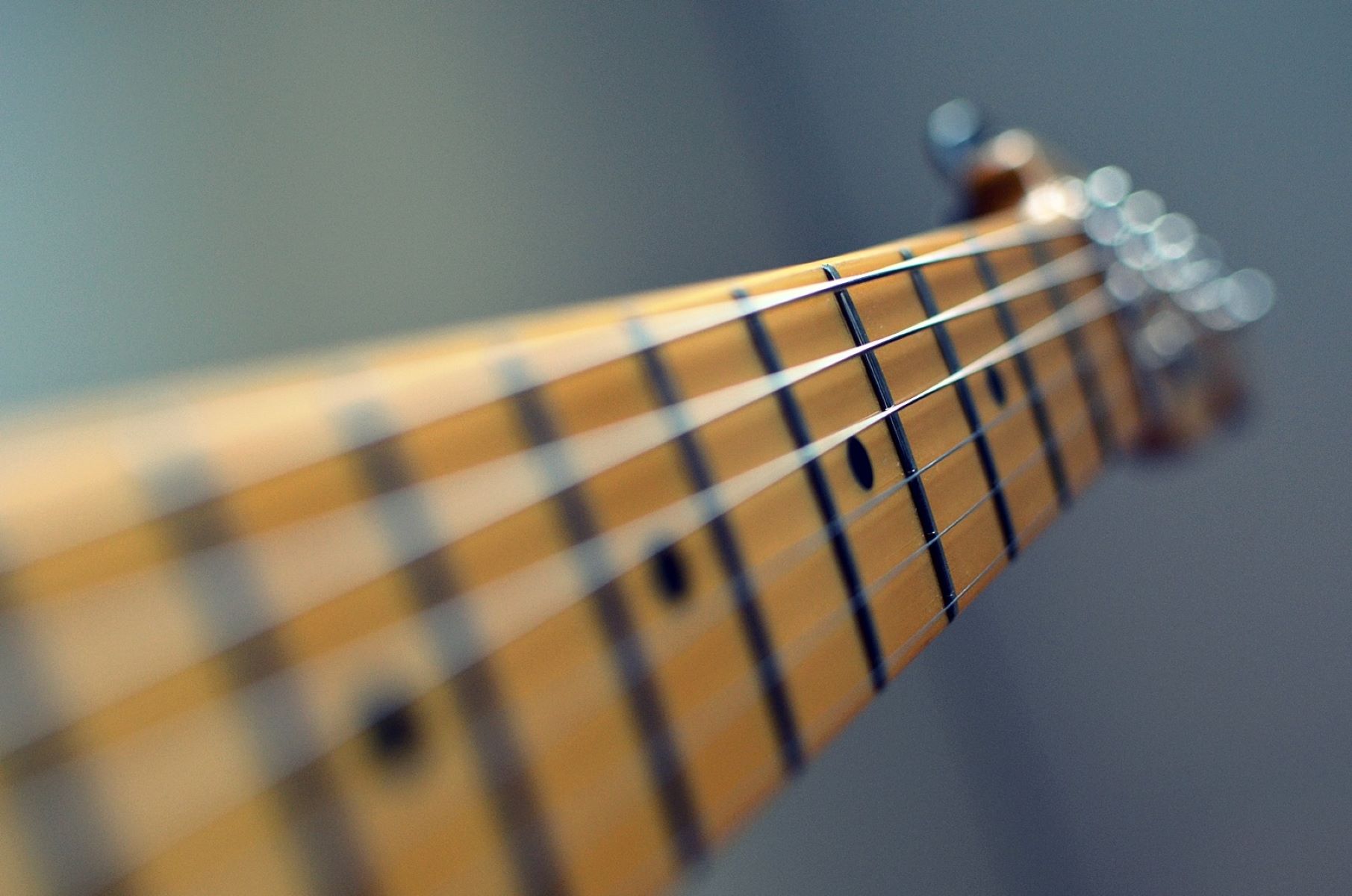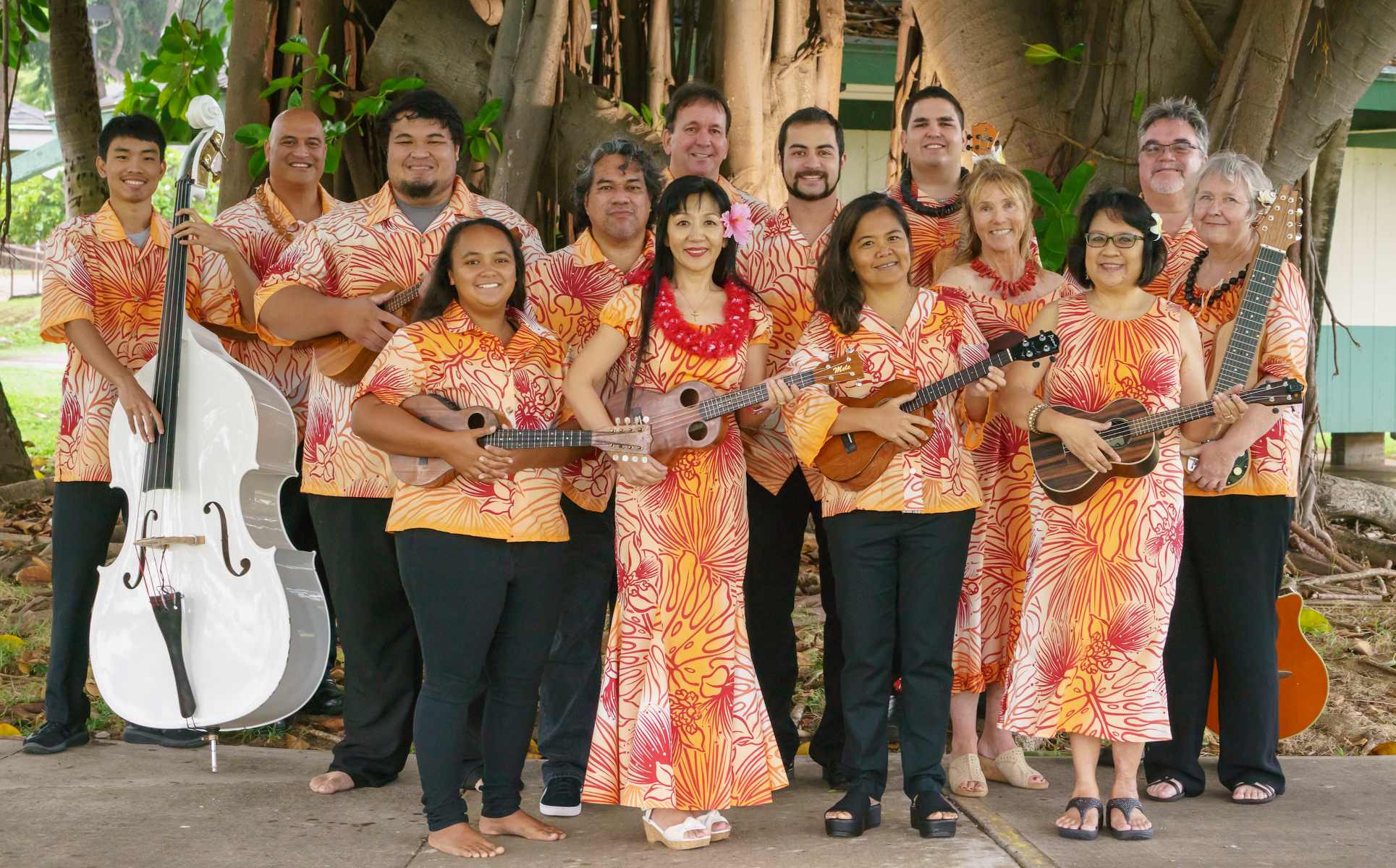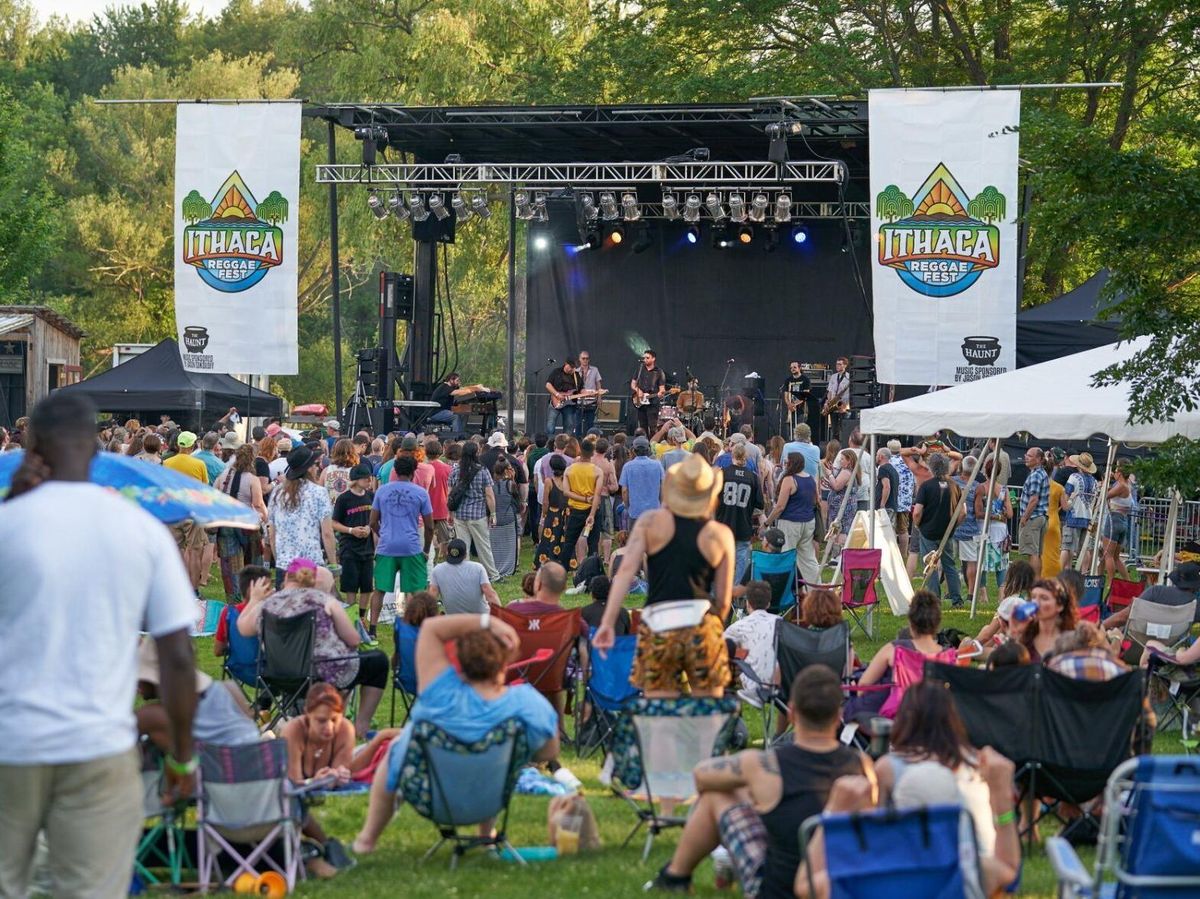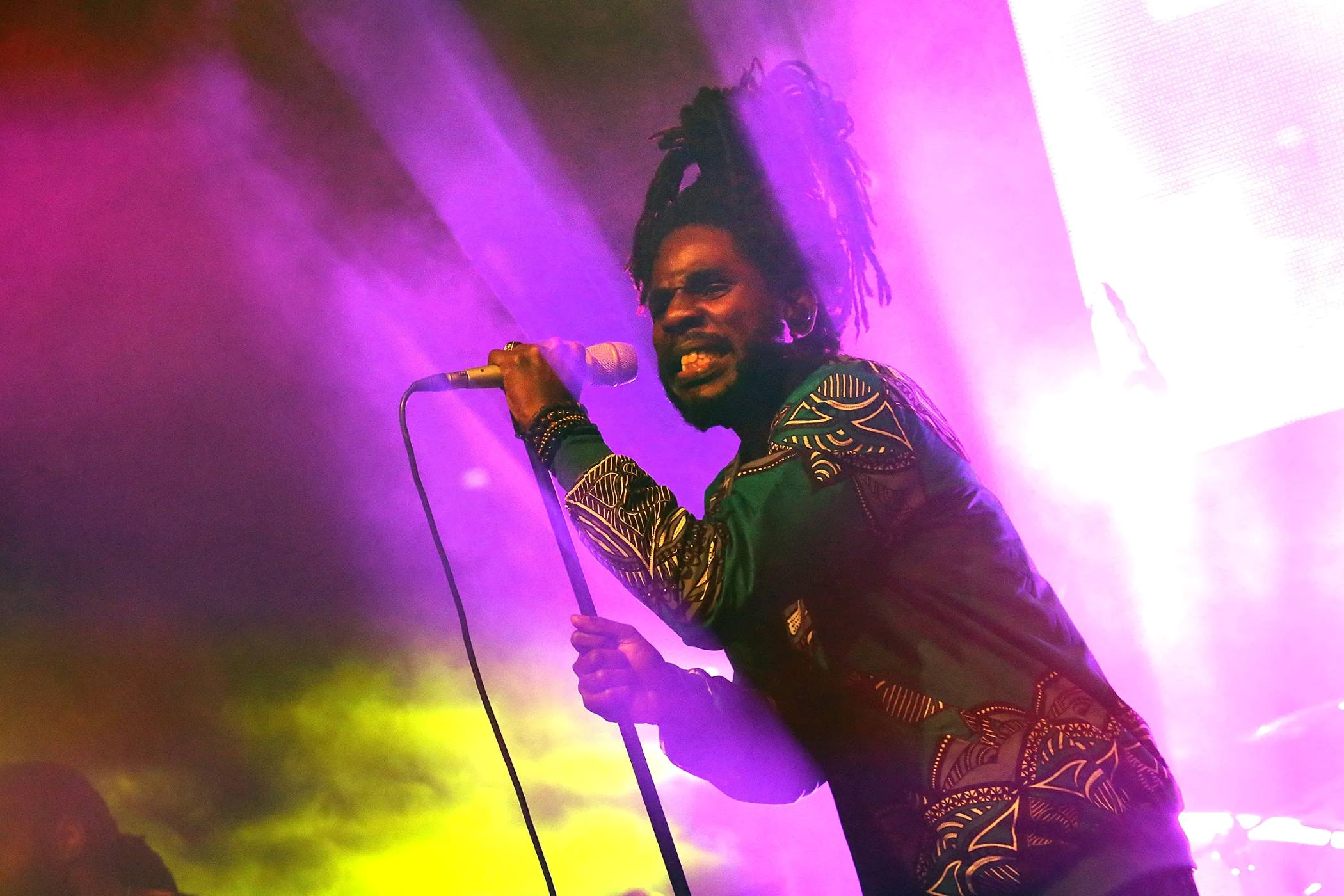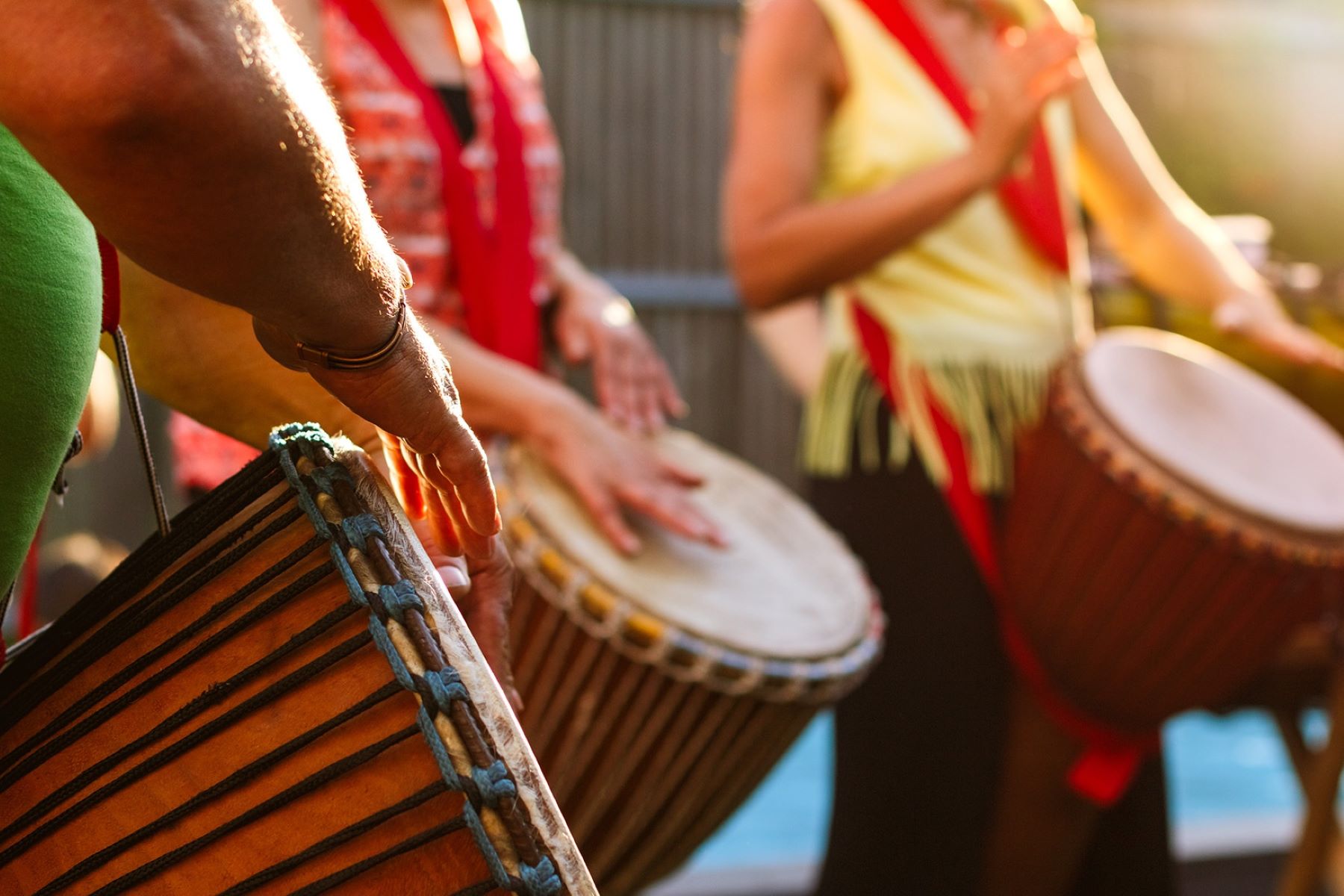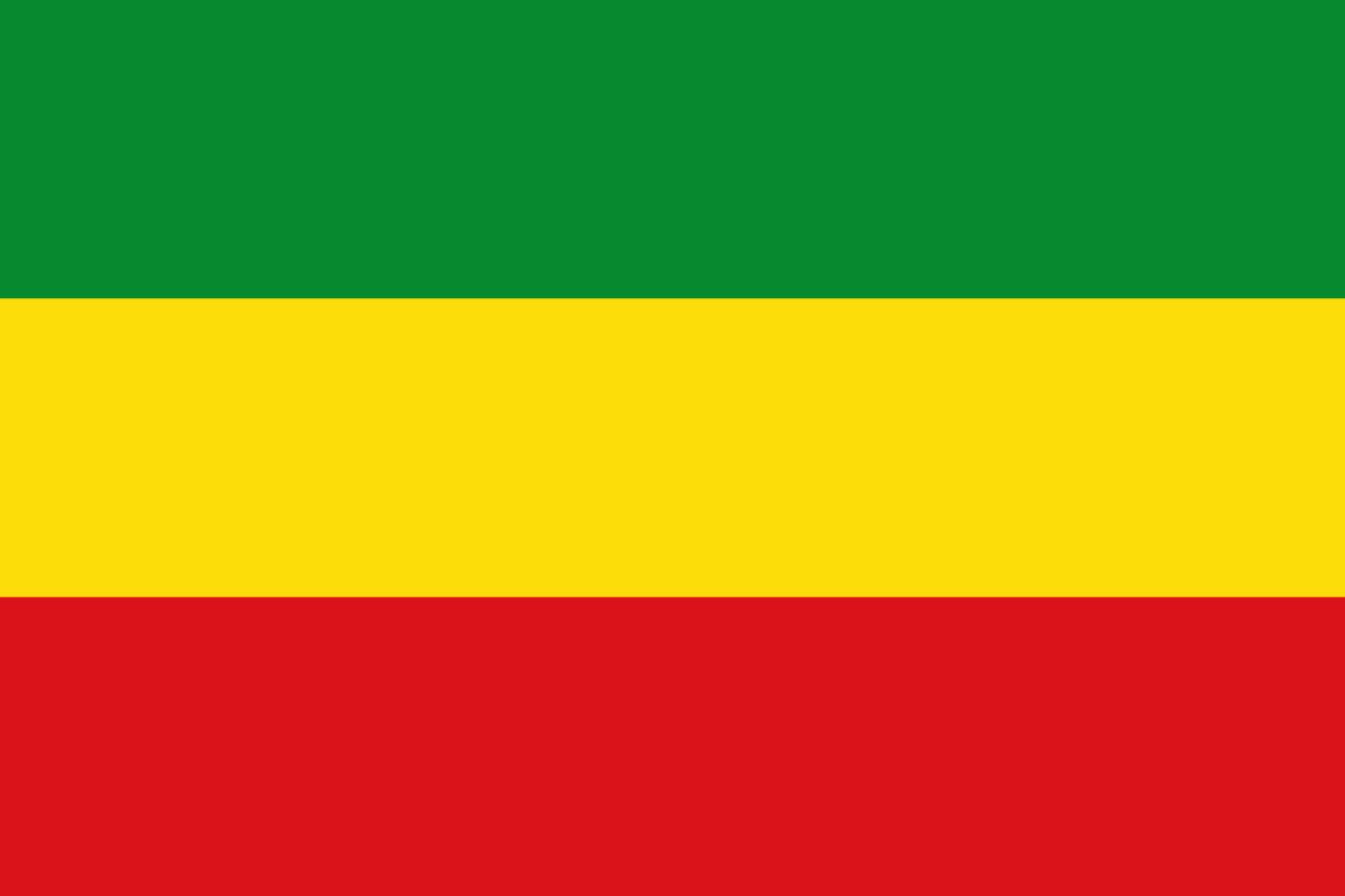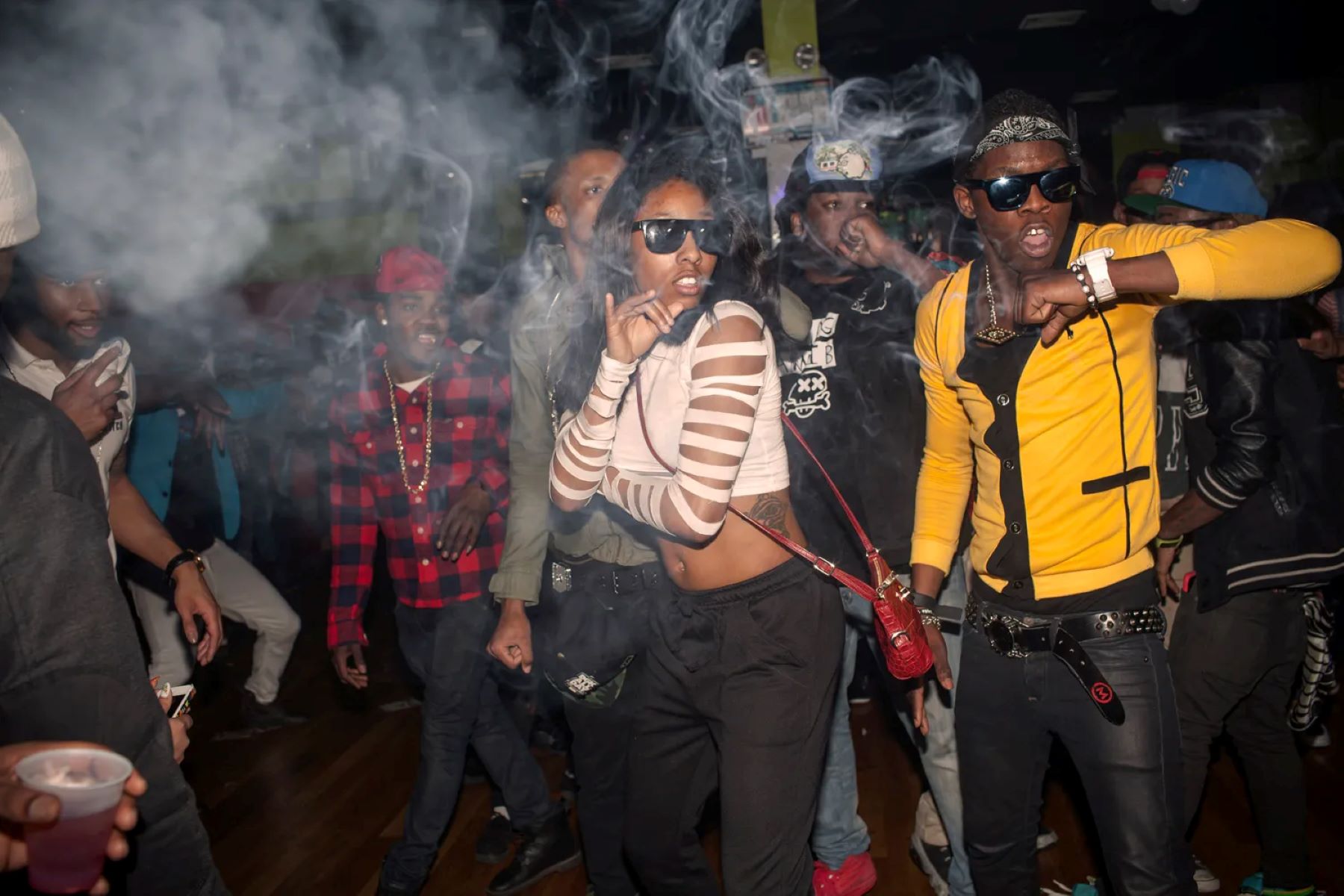

Reggae
What Is Dancehall Reggae
Modified: March 3, 2024
Discover the vibrant and infectious world of Dancehall Reggae, a genre of music that originated in Jamaica. Explore the pulsating rhythms, soulful melodies, and powerful messages that define this iconic Reggae subgenre.
(Many of the links in this article redirect to a specific reviewed product. Your purchase of these products through affiliate links helps to generate commission for AudioLover.com, at no extra cost. Learn more)
Table of Contents
Introduction
Dancehall Reggae is a vibrant and influential music genre that originated in Jamaica during the 1970s. It emerged as a fusion of reggae and other musical styles such as ska, rocksteady, and dub. Dancehall Reggae is characterized by its infectious rhythms, energetic beats, and catchy melodies.
Unlike traditional reggae, Dancehall Reggae places a greater emphasis on the vocals and the DJ’s ability to “toast” or chant over the beats. This style of music involves the use of electronically produced rhythms, known as riddims, which provide a high-energy backdrop for the distinctive vocal delivery.
The lyrics of Dancehall Reggae often address a variety of social and political issues, as well as themes of love, partying, and the celebration of life. Dancehall Reggae has experienced a significant influence on popular music globally, with its infectious melodies, catchy hooks, and infectious dance moves captivating listeners worldwide.
This article aims to explore the origins, characteristics, influence, and artists associated with Dancehall Reggae. We will delve into the different styles within the genre, discuss the controversies and criticisms it has faced, and examine its impact on popular culture.
So, if you’re ready to dive into the pulsating world of Dancehall Reggae, put on your dancing shoes and get ready to groove to the infectious beats and captivating rhythms of this iconic genre.
Origins of Dancehall Reggae
The roots of Dancehall Reggae can be traced back to Jamaica’s vibrant music scene in the 1970s. It emerged as a response to the political and social climate of the time, reflecting the struggles and aspirations of the Jamaican people.
As reggae music gained popularity both in Jamaica and internationally, a new wave of Jamaican artists began experimenting with its sound, infusing it with elements of ska and rocksteady, and incorporating new electronic music techniques.
The term “Dancehall” itself refers to the venues where this style of music was performed – typically large open spaces where people gather to dance, socialize, and enjoy the latest musical offerings. These dancehalls served as the platforms for local artists to showcase their talent and engage with their audience.
One of the key figures in the evolution of Dancehall Reggae was King Jammy, a pioneering producer and sound system operator. His experimentation with drum machines and synthesizers led to the creation of new electronic beats and innovative soundscapes, giving birth to the Dancehall Reggae sound.
Another crucial influence on the genre was the rise of the DJ culture in Jamaica. DJs like U-Roy, Yellowman, and Shabba Ranks played a significant role in shaping Dancehall Reggae, with their charismatic performances and lyrical prowess. They introduced the art of “toasting” – a style of rhythmic chanting and improvisation over the beats, which became a defining characteristic of Dancehall Reggae.
Throughout the 1980s and 1990s, Dancehall Reggae continued to evolve and gain popularity, with artists like Beenie Man, Buju Banton, and Shaggy dominating the charts and bringing the genre to a wider international audience.
Today, Dancehall Reggae remains a thriving and influential genre, with artists constantly pushing boundaries and experimenting with new sounds. Its roots in Jamaican culture and its ability to connect with audiences on a deep emotional and rhythmic level continue to make Dancehall Reggae a force to be reckoned with in the music industry.
Characteristics of Dancehall Reggae
Dancehall Reggae is a genre known for its distinctive characteristics that set it apart from other forms of music. From its energetic beats to its captivating vocal delivery, Dancehall Reggae possesses a sound and style that is instantly recognizable.
One of the defining features of Dancehall Reggae is its infectious rhythms and high-energy beats. The use of electronic instruments, drum machines, and synthesizers creates a pulsating backdrop that drives the music forward. These rhythms are often referred to as “riddims” and form the foundation for the songs.
Another characteristic of Dancehall Reggae is the emphasis on the vocals and the DJ’s ability to “toast” or chant over the beats. The lyrics are delivered with a distinct rhythm and flow, often exploring various social and political themes or celebrating love, partying, and the vibrant Jamaican culture.
The lyrical content in Dancehall Reggae can be diverse, reflecting the realities and experiences of the Jamaican people. It addresses topics such as poverty, inequality, violence, and political unrest, providing social commentary and giving voice to the marginalized communities.
Additionally, Dancehall Reggae is known for its infectious melodies and catchy hooks that get listeners hooked from the first note. The combination of catchy melodies, pulsating rhythms, and memorable lyrics creates a captivating and immersive sonic experience.
Another distinctive feature of Dancehall Reggae is its ability to stimulate dance and movement. The infectious beats and catchy rhythms make it impossible to resist the urge to dance. The dance moves associated with Dancehall Reggae, such as the “Wine,” “Dutty Wine,” and “Gully Creepa,” add to its energetic and vibrant nature.
Dancehall Reggae also possesses a unique sense of fashion and style. From flashy outfits to elaborate hairstyles, artists within the genre often make bold fashion statements, adding to the overall visual aesthetic of the music.
All these characteristics come together to create the dynamic and captivating sound of Dancehall Reggae, making it a genre that continues to resonate with audiences worldwide.
Influence of Dancehall Reggae
Dancehall Reggae has had a profound influence on both the music industry and popular culture. Its infectious rhythms, captivating vocals, and unique style have left an indelible mark on a wide range of musical genres and artists worldwide.
One of the primary ways Dancehall Reggae has influenced the music industry is through its impact on the development of hip-hop and rap music. The rhythmic delivery and lyrical style of Dancehall Reggae provided a blueprint for many early hip-hop artists, who incorporated elements of toasting and rhythmic chanting into their own music. This influence can be heard in the works of renowned hip-hop artists such as Notorious B.I.G., Busta Rhymes, and Missy Elliott, who have incorporated Dancehall-infused rhythms and vocal techniques into their songs.
In addition to its influence on hip-hop, Dancehall Reggae has also played a significant role in the evolution of pop music. Artists like Rihanna, Drake, and Major Lazer have seamlessly infused Dancehall Reggae elements into their pop sound, resulting in chart-topping hits and bringing Dancehall Reggae to a wider mainstream audience.
Furthermore, Dancehall Reggae has made its mark on electronic music genres such as EDM and dubstep. Producers and DJs have incorporated Dancehall-inspired beats and vocal samples into their electronic productions, creating a fusion of genres that energizes dancefloors around the world.
Beyond the musical sphere, Dancehall Reggae has also influenced fashion, dance, and the overall aesthetic of popular culture. The vibrant and flamboyant style of Dancehall Reggae artists has inspired fashion trends and influenced the music video industry with its bold colors, unique hairstyles, and flashy outfits.
The dance moves associated with Dancehall Reggae have also gained popularity internationally, with dances like the “Nuh Linga” and the “Gully Creepa” being adopted and performed by dancers worldwide in music videos, dance competitions, and social media platforms.
Moreover, the lyrical content of Dancehall Reggae, which often addresses social and political issues, has sparked important discussions and contributed to the awareness of the struggles faced by marginalized communities.
Overall, the influence of Dancehall Reggae can be felt across genres and cultures, making it a significant force in shaping the global music landscape and leaving a lasting impact on popular culture as a whole.
Different Styles in Dancehall Reggae
Dancehall Reggae is a genre that encompasses a wide range of styles and sub-genres, each with its own unique characteristics and influences. These different styles have emerged over the years, reflecting the evolution and growth of the genre.
One of the notable styles within Dancehall Reggae is “Roots Dancehall.” This style maintains a connection to the roots of Jamaican music, incorporating elements of traditional reggae and focusing on conscious and uplifting lyrics. Artists like Chronixx and Protoje are known for their contributions to Roots Dancehall, infusing it with modern production techniques while staying true to the essence of the genre.
“Ragga” is another prominent style in Dancehall Reggae, characterized by its fast-paced and energetic rhythms. It emerged in the late 1980s and early 1990s, combining reggae with elements of hip-hop and electronic dance music. Artists such as Shabba Ranks and Buju Banton popularized the Ragga style, with their rapid-fire vocal delivery and infectious dancehall beats.
“Digital Dancehall” is a sub-genre that emerged in the 1990s, marked by the use of digital production techniques and computerized sounds. This style introduced a new wave of innovation in Dancehall Reggae, with artists like Sean Paul and Beenie Man gaining international success with their catchy melodies and electronic-infused beats.
There is also a crossover style called “Reggae Fusion” that blends Dancehall Reggae with elements of other genres like pop, hip-hop, and R&B. Artists such as Sean Kingston and Rihanna have achieved commercial success by fusing Dancehall Reggae with mainstream pop music, creating a unique and accessible sound that appeals to a wide audience.
Moreover, “Bashment” is a style that has gained popularity in recent years, characterized by its raw and gritty sound that focuses on dancehall’s core elements. It often showcases rapid-fire lyrics, high-energy beats, and explicit content. Artists like Vybz Kartel and Popcaan have been instrumental in popularizing bashment music both in Jamaica and on the global stage.
These styles demonstrate the versatility and adaptability of Dancehall Reggae, as artists continue to push boundaries and experiment with new sounds. From the conscious and uplifting vibes of Roots Dancehall to the explosive energy of Ragga and the innovative fusion of Reggae Fusion, Dancehall Reggae encompasses a wide spectrum of styles that cater to diverse musical preferences.
Regardless of the style, Dancehall Reggae remains rooted in its vibrant and infectious rhythms, captivating vocals, and the ability to get people moving on the dancefloor.
Dancehall Reggae Artists
Dancehall Reggae has been blessed with a plethora of talented and influential artists who have made significant contributions to the genre. These artists have not only shaped the sound and direction of Dancehall Reggae but have also left an indelible mark on the music industry as a whole.
One of the most iconic figures in Dancehall Reggae is Bob Marley, known as the “King of Reggae.” While Marley is primarily associated with reggae music, his influence extended to Dancehall with songs like “Jamming” and “Exodus.” His fusion of reggae and political consciousness laid the foundation for future Dancehall Reggae artists.
Another legendary artist is Shabba Ranks, who rose to prominence in the late 1980s and early 1990s. With his unique vocal style and energetic stage presence, Shabba Ranks became a true Dancehall superstar, paving the way for dancehall artists to achieve mainstream success.
Sean Paul is another notable Dancehall Reggae artist who achieved significant commercial success on the global stage. His infectious hits like “Temperature” and “Get Busy” brought Dancehall Reggae to a wider audience, fusing it with elements of pop and hip-hop to create a distinct sound.
Buju Banton is renowned for his powerful and thought-provoking lyrics, addressing socio-political issues and spirituality within the Dancehall Reggae framework. His album “Til Shiloh” is considered a masterpiece in the genre, showcasing his versatility and depth as an artist.
Vybz Kartel, often referred to as the “Worl’ Boss,” is a controversial figure known for his explicit and provocative lyrics. Despite his legal troubles, Kartel has had a significant impact on Dancehall Reggae, with his unique style and catchy hooks dominating the dancehall charts for years.
Other influential Dancehall Reggae artists include Beenie Man, Bounty Killer, Lady Saw, Konshens, Spice, and Popcaan, among many others. These artists have continuously pushed the boundaries of the genre, experimenting with different sounds, and staying true to Dancehall’s roots.
It is worth noting that Dancehall Reggae is not only dominated by male artists. Female artists like Sister Nancy, Lady G, and Tanya Stephens have made notable contributions to the genre, with their powerful voices and empowering lyrics challenging gender norms within the industry.
These artists, both past and present, have played a vital role in shaping Dancehall Reggae and have helped bring its infectious rhythms and captivating lyrics to a global audience. Their creativity, innovation, and dedication continue to inspire and influence the next generation of Dancehall Reggae artists.
Controversies and Criticisms of Dancehall Reggae
Dancehall Reggae, like any other genre of music, has faced its fair share of controversies and criticisms. While the genre has captivated millions of fans around the world, it has also been subject to scrutiny and debate from various quarters.
One criticism that Dancehall Reggae often faces is regarding its explicit lyrics and explicit content. Some argue that the sexually explicit and violent lyrics in certain Dancehall songs promote misogyny, homophobia, and violence. These critics claim that the genre perpetuates negative stereotypes and encourages harmful behavior.
The use of explicit language and imagery in Dancehall Reggae lyrics has been a topic of controversy and has prompted calls for censorship and regulation in some countries. Critics argue that these lyrics can have a negative impact on impressionable listeners, particularly young people.
Homophobic lyrics have also been a significant point of contention within the Dancehall Reggae community. Some artists have been accused of promoting anti-gay sentiments through their music, leading to protests and boycotts from LGBTQ+ advocacy groups.
However, it is important to note that not all Dancehall Reggae artists promote negativity or embrace explicit content. Many artists utilize their platform to address social issues, advocate for change, and spread positive messages of unity and empowerment.
Another criticism leveled against Dancehall Reggae is the perceived glorification of violence and gang culture. Some argue that certain Dancehall songs promote a culture of violence and criminal behavior, particularly in the lyrical content that glamorizes “badman” or gangster lifestyles. Critics claim that such messaging can have detrimental effects, particularly on impressionable youth.
Furthermore, Dancehall Reggae has faced criticism for its representations of women. Some argue that certain songs objectify women, portraying them as sexual objects and reinforcing gender stereotypes. There is an ongoing debate within the genre about promoting more respectful and empowering portrayals of women.
Despite these controversies and criticisms, many artists within the Dancehall Reggae community have taken steps to address these issues and promote positive change. Conscious Dancehall artists have used their music to challenge stereotypes, advocate for social justice, and promote unity and positivity.
Overall, the controversies and criticisms surrounding Dancehall Reggae highlight the need for ongoing dialogue and responsible artistic expression. It is essential for artists, industry stakeholders, and fans to engage in conversations, push for inclusivity, and strive for a more balanced representation within the genre.
Dancehall Reggae’s Impact on Pop Culture
Dancehall Reggae has made a significant impact on pop culture, transcending boundaries and influencing various aspects of art, fashion, and entertainment. Its infectious rhythms, catchy melodies, and vibrant energy have captured the attention of audiences worldwide, leaving an indelible mark on popular culture.
One of the key ways Dancehall Reggae has impacted pop culture is through its influence on music beyond the genre itself. Artists from different genres, such as pop, hip-hop, and electronic, have incorporated Dancehall-infused sounds and rhythms into their music. This fusion has resulted in chart-topping hits and collaborations that reach a broader audience and bridge cultural gaps.
The influence of Dancehall Reggae can be heard in the catchy hooks and rhythmic delivery of pop songs, the urban and street elements of hip-hop and rap, and the infusion of dancehall beats in electronic and EDM music. This cross-pollination of genres not only expands the reach of Dancehall Reggae but also showcases its adaptability and ability to resonate with diverse musical tastes.
Beyond music, Dancehall Reggae has influenced fashion and style. Dancehall artists are known for their bold and colorful outfits, unique hairstyles, and overall flamboyance. Their fashion choices have influenced trends and inspired designers, stylists, and fashion-forward individuals. Dancehall’s impact on fashion extends to music videos, stage performances, and red carpet appearances, adding a visually striking and dynamic element to the overall aesthetic.
The dance moves associated with Dancehall Reggae have also become iconic in pop culture. From the classic “Bogle” to the more recent “Fling Yuh Shoulder,” these dance moves have been adopted and incorporated into music videos, live performances, and social media challenges. They have become an integral part of the visual language and performance aspect of many artists across genres.
Moreover, Dancehall Reggae has influenced the art of storytelling in popular culture. The raw and authentic lyrics, addressing social issues, love, and celebration, have resonated with listeners and inspired them to tell their own stories. Dancehall’s ability to capture the realities and aspirations of the Jamaican people has influenced not only musicians but also writers, filmmakers, and visual artists.
In terms of language, Dancehall Reggae has also played a role in popularizing Jamaican Patois (Patwa) and introducing Jamaican slang and expressions into mainstream culture. Words and phrases like “irie,” “gyal,” and “wah gwan” have become part of the lexicon, with many people embracing and incorporating them into their everyday language.
Overall, Dancehall Reggae’s impact on pop culture extends far beyond its musical realm. Its influence can be seen in music, fashion, dance, visual arts, and even language. Its vibrant and infectious energy continues to shape and inspire the ever-evolving landscape of popular culture.
Conclusion
Dancehall Reggae is a genre that has left an undeniable impact on the music industry and popular culture as a whole. With its infectious rhythms, energetic beats, and captivating vocal delivery, Dancehall Reggae has captivated audiences around the world, transcending boundaries and influencing various aspects of art, fashion, and entertainment.
From its origins in Jamaica in the 1970s to its global reach today, Dancehall Reggae has evolved and diversified, giving rise to different styles and sub-genres. Artists within the genre have pushed boundaries, experimented with new sounds, and addressed social and political issues. Their creativity and innovation continue to shape the sound and direction of Dancehall Reggae.
Dancehall Reggae’s influence can be heard in mainstream music, with artists from different genres incorporating Dancehall-infused sounds and rhythms into their songs. It has impacted fashion, inspiring trends and providing a visual aesthetic that is bold, vibrant, and unique. Dancehall’s dance moves and expressive performances have become iconic, influencing artists and dancers across the globe.
However, Dancehall Reggae has not been immune to controversies and criticisms. It has faced scrutiny for explicit lyrics, promoting violence, misogyny, and homophobia. These criticisms prompt ongoing discussions within the Dancehall community and the music industry at large, highlighting the importance of responsible artistic expression.
Despite these challenges, Dancehall Reggae continues to thrive and evolve, remaining a powerful and influential force in the music industry and popular culture. Its infectious rhythms, thought-provoking lyrics, and energetic performances connect with people on a deep emotional and rhythmic level, making it a genre that resonates across cultures and generations.
Whether it’s through the powerful messages of social justice, the energetic dance moves, or the catchy melodies that get heads nodding and feet moving, Dancehall Reggae has proven its ability to leave a lasting impact on the global stage. It has enriched the musical landscape and contributed to the vibrancy and diversity of popular culture.
So, whether you’re a long-time fan or someone new to the genre, take a moment to immerse yourself in the infectious beats and melodic rhythms of Dancehall Reggae. Allow yourself to be swept away by its energy, inspired by its messages, and enchanted by its unique sound.


